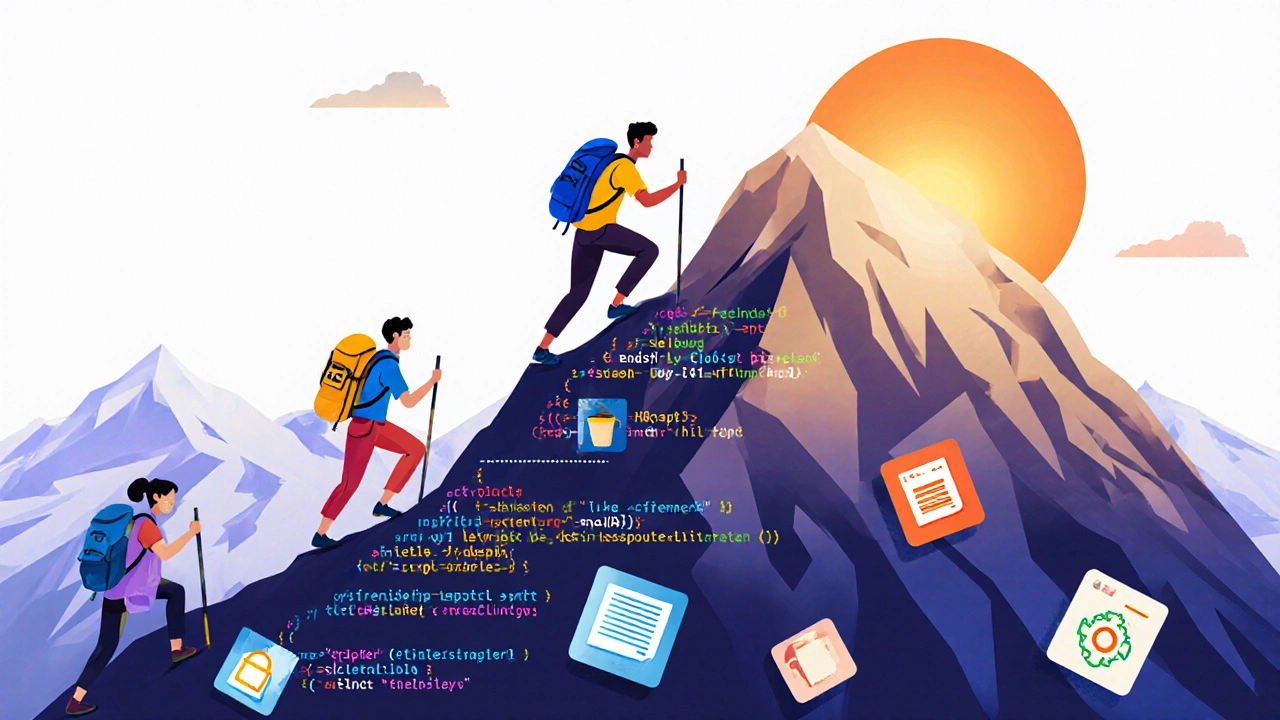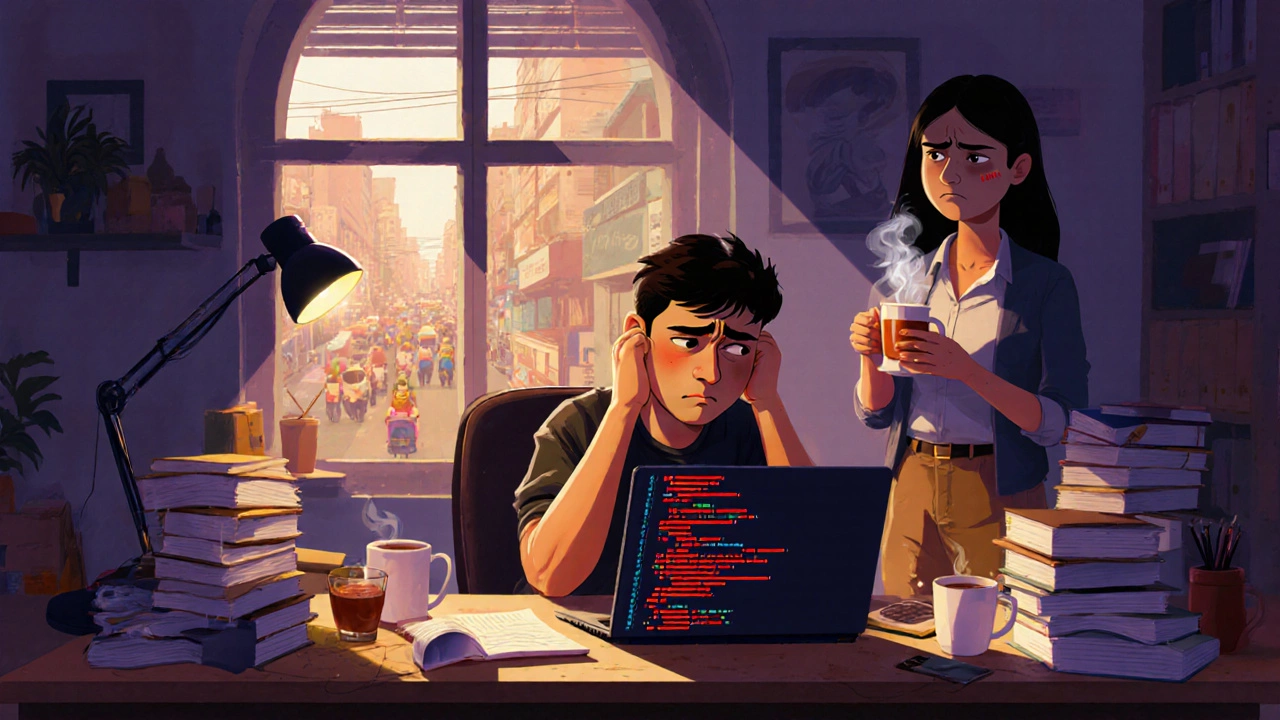Developer Role Difficulty Estimator
Select a developer role below to see estimated difficulty and common challenges.
Coding is a systematic process of writing, testing, and maintaining computer source code that powers software applications.
When you hear people ask, "Is coding a very hard job?", they’re usually betting on the reputation of tech work: odd hours, steep learning curves, and the myth of the lone genius. The reality is messier, but it does boil down to a few core factors that make the profession uniquely demanding.
What Makes Coding Hard?
First, coding is coding difficulty itself-a blend of logical reasoning, abstract thinking, and constant problem‑solving. Unlike a manual task that repeats the same steps, a developer’s day is riddled with new bugs, shifting requirements, and the need to juggle multiple technologies simultaneously.
Second, the software developer is a professional who designs, builds, and maintains software systems, typically working with multiple programming languages and tools. The range of languages-JavaScript, Python, Go, Rust-means you never truly “finish” learning; you keep adding to a mental inventory that can feel overwhelming.
Third, many tasks hinge on algorithms step‑by‑step procedures for solving computational problems. Understanding how to turn a business rule into an efficient algorithm is a skill that separates seasoned engineers from newcomers.
Key Challenges Developers Face Daily
- Debugging: Finding why code fails is often a hunt through layers of abstraction. A single off‑by‑one error can cascade into a system‑wide outage.
- Continuous Learning: New frameworks appear every few months. Keeping up demands regular reading, tutorials, and side projects.
- Collaboration Pressure: Modern development rarely happens in isolation. Teams use version control, pull requests, and code review a systematic inspection of code changes before they merge to maintain quality, adding a social‑technical layer to the work.
- Tool Overload: Integrated Development Environments (IDE software that provides code editing, debugging, and testing in one package) like VS Code, IntelliJ, and PyCharm offer power, but mastering shortcuts and plugins takes time.
- Process Rigor: Teams often follow Agile methodology an iterative approach to planning and delivering software. While Agile improves flexibility, the cadence of sprints, stand‑ups, and retrospectives can feel relentless.
How Different Developer Roles Stack Up
Not every coding job feels the same. Front‑end work, back‑end engineering, and full‑stack responsibilities each bring distinct pain points. Below is a quick visual guide.
| Role | Primary Focus | Typical Difficulty Rating (1‑5) | Common Challenges |
|---|---|---|---|
| Frontend Developer | User interface & visual experience | 3 | Cross‑browser bugs, rapid UI changes |
| Backend Developer | Server logic & data management | 4 | Scalability, security, complex APIs |
| Full‑Stack Developer | Both front‑ and back‑end | 5 | Balancing breadth vs depth, time pressure |
Notice how the “Difficulty Rating” aligns with the breadth of knowledge required. Full‑stack engineers must switch mental models frequently, making their day‑to‑day feel more taxing.

Practical Strategies to Tame the Hard Parts
Knowing why coding feels hard is half the battle; the next step is building habits that reduce friction.
- Break Problems Into Small Units: Use the "divide and conquer" technique. Turn a large feature into bite‑size tickets that can be completed in a few hours.
- Leverage the IDE: Configure your IDE to auto‑format code, suggest completions, and run unit tests on save. Investing 30 minutes in setup pays off daily.
- Adopt Test‑Driven Development (TDD): Writing tests first forces you to clarify requirements and catches bugs early, shaving hours off debugging later.
- Schedule Learning Time: Block 1‑2 hours each week for tutorials or reading technical blogs. Treat it like a meeting you can’t miss.
- Use Pair Programming: Two heads solve a puzzle faster; it also spreads knowledge and reduces the isolation that fuels burnout.
- Automate Repetitive Tasks: Scripts for building, deploying, or linting eliminate manual steps, freeing mental space for creative work.
These habits work across all roles, but the impact is most visible when you align them with the specific challenges of your position.
Real‑World Example: From Overwhelmed to Confident
Take Maya, a junior backend engineer at a fintech startup. In her first three months she wrestled with cryptic memory leaks, a constantly shifting API contract, and nightly deployment failures. Maya felt the job was “hard” to the point of considering a career change.
She adopted three of the strategies above:
- She set up her IDE to run unit tests automatically on save, catching bugs before they hit staging.
- She paired with a senior developer twice a week, turning code review sessions into collaborative learning moments.
- She allocated Friday afternoons to a short “tech deep‑dive” where she read up on the company’s caching layer.
Within two months, her incident count dropped by 40%, and she reported a 30% boost in confidence. Maya’s story illustrates that the perceived hardness of coding often stems from missing scaffolding rather than an inherent impossibility.
The Future Landscape: Will Coding Get Easier?
Emerging trends like low‑code platforms and AI‑assisted coding (GitHub Copilot, Tabnine) promise to lower the barrier for routine tasks. However, the need for deep logical reasoning, system design, and ethical judgment will remain. In other words, the *type* of difficulty may shift, but the profession will still challenge those who avoid continuous learning.
Preparing for this future means staying adaptable, mastering fundamentals, and leaning on community resources-online forums, open‑source contributions, and mentorship programs.
Frequently Asked Questions
Is coding harder than other professions?
Coding demands a mix of logical thinking, constant learning, and collaboration. While physical jobs may be tougher on the body, programming can be mentally exhausting, especially for newcomers facing steep learning curves.
What skills reduce the perceived difficulty of a coding job?
Strong problem‑solving fundamentals, proficiency with an IDE, familiarity with version control, and good communication habits (like clear code reviews) all flatten the learning curve.
Does working in a specific developer role make the job easier?
Each role has its own challenges. Front‑end work often deals with visual quirks, back‑end focuses on scalability and security, and full‑stack demands breadth. Choosing a role that aligns with your strengths can make the job feel less demanding.
How can I avoid burnout as a developer?
Set clear work boundaries, take regular breaks, practice test‑driven development to catch bugs early, and invest in teamwork practices like pair programming and code reviews to share the load.
Will AI tools eliminate the need for human coders?
AI can speed up repetitive coding and suggest snippets, but designing architecture, ensuring security, and making ethical choices still require human judgment. Think of AI as a powerful assistant, not a replacement.

